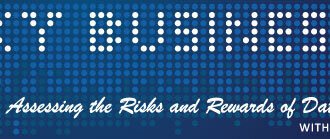Have you ever wondered what your email productivity is really like? Or have you wondered how much time your employees are wasting on fielding poorly written emails, or sending messages that aren’t necessary?
There’s a new analytics tool for Gmail—called EmailAnalytics—that gives you insights on all your team’s emailing habits. But for small businesses with only a few team members, is analytics for Gmail worth the investment?
Flying Blind
You and your team send emails every day—and probably with higher volume than you realize. Some studies suggest the average American worker spends 6.3 hours a day (or more) checking email, yet the time it takes to read or draft a single email is so minimal, we rarely give it our full attention or notice.
It seems innocuous, but even a small decrease in productivity per email could have a drastic impact on overall performance since each worker sends and receives a combined average of 161 emails every day; unless you know exactly how you’re emailing, and where you’re wasting time, you’ll be flying blind.
The Concept
The concept behind EmailAnalytics is pretty simple: give entrepreneurs and employees more transparency into their emailing habits. The app integrates directly with Gmail, pulling in all the requisite information and using data visualization to display that data in interactive, intuitive charts and graphs.
With a few clicks, you can change reports, customize your displays by filtering or excluding certain types of emails, and at a glance, learn new information about how your habits impact your performance.
Key Metrics to Note
What kind of metrics can EmailAnalytics display? These are just some of the most important highlights:
- Email volume. At a glance, you’ll be able to see how many emails you’re sending, how many you’re receiving, and where those emails currently “live.” You can use this information to roughly gauge how many responsibilities the individuals on your team are dealing with, or determine how organized your inbox is.
- Sender and recipient data. You’ll also be able to see who your top senders and recipients are, giving you insight into who occupies your time the most—both within and outside your organization. With this information, you can quickly tell who your most demanding clients are, and which of your employees is communicating too much—or too little.
- Time spent. Perhaps the easiest metric to analyze is the time you spend, on average, both writing and reading emails. In EmailAnalytics, you can learn how long it takes you to draft a new message, and how long it takes you to read new messages. Together, you’ll quickly get a clear picture of how you’re spending your time—and how you might go about improving that time.
- Conversation value. You can also get statistics on the conversations or “threads” you manage on a regular basis, noting things like how many messages are sent per conversation, who initiates the majority of the conversations, and how much time each conversation takes. Since these threads contain many messages and are read by many people, they’re especially vulnerable to productivity loss.
Improving Your Bottom Line
Understanding these metrics is important, but turning them into actionable takeaways is the real goal. Ultimately, you can use email analytics information to optimize:
- Personal productivity. First, you’ll be able to optimize your personal productivity. Sure, you can focus on improving your typing speed or learning a few keyboard shortcuts to shave a few seconds off your time, but the real advancements here will be choosing only the most important emails to send, writing more concise messages, and forcing your team to be more discerning with their messages. Here are more email productivity tools to check out, if you’re interested.
- Employee efficiency. These reports can also help you improve the productivity of your workers. You can use volume-focused statistics to rebalance workloads between your busiest and least-busy employees, and work individually with team members who seem to send the least productive emails, on average.
- Client value. You can also determine which of your clients seem to be occupying most of your time, and compare that time consumption to how much they’re paying you. It’s never fun or easy to fire a client, but if you find some of your clients taking up far more time than they’re worth, you may be forced to choose between charging significantly more or letting them go; either way, you’ll be making a positive decision for the company’s profitability.
Email analytics tools can’t add more hours to your day directly, or open up a new revenue stream for your business, but it can give you power and control over one of your most time-consuming daily responsibilities.
On a micro level, your changes may not seem like they amount to much, but with hundreds of emails coming in and going out of your inbox every day, any change you make could free up hours of time every week to focus on more important tasks.









